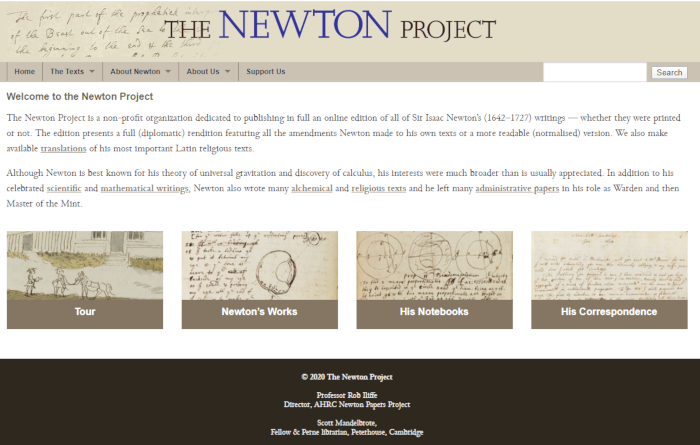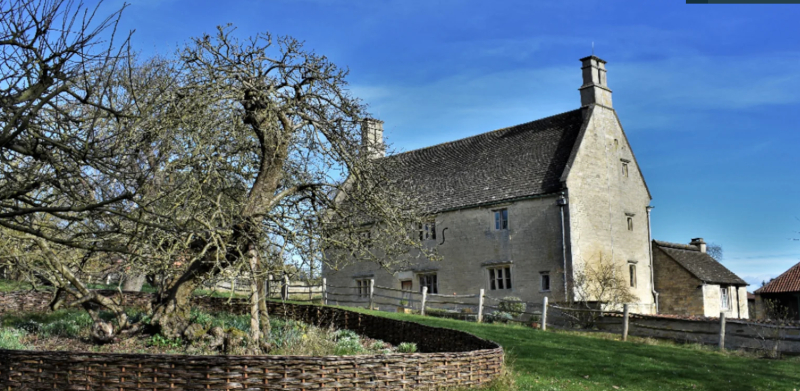Isaac Newton died two hundred and ninety-three years ago today.[1. Before anyone writes in to protest that he didn’t, Newton may also be described as having died on 20 March 1726, and which of these dates is cited depends upon which calendar is drawn upon to describe it. In the seventeenth century, two calendars—the Julian and the Gregorian—were in widespread use across Europe. The former (known as the ‘Old Style’) tended to be employed—although not exclusively—in Protestant countries; the latter (termed ‘New Style’) had been in adopted in Catholic countries since the issue of the Papal Bull by Gregory XIII in 1582. Gregorian dates ran ten days ahead of the Julian in the seventeenth century, and this difference stretched to eleven days in the eighteenth century. Complicating this discrepancy further was the fact that in England, until 1752 when the Gregorian calendar was set in place, the year change occurred on Lady Day (25 March). In consequence, Newton may be described in the Julian dating system as having been born on 25 December 1642 and died on 20 March 1726, or on 4 January 1643 and 31 March 1727 respectively under the proleptic (beginning the year on 1 January and imposing this retrospectively as if it had always been in place) Gregorian calendar. For a detailed explanation of these early modern calendrical conundrums, you might wish to refer to the chapter entitled ‘Time’ in the recently published co-authored volume Reassembling the Republic of Letters in the Digital Age. Standards, Systems, Scholarship, ed. H. Hotson and T. Wallnig (Göttingen: Universitätsverlag Göttingen, 2019), pp. 97–104, an online version of which is available for free download.] To mark the occasion EMLO is publishing an inventory of his letters. The metadata for this listing have been collated by members of the Cultures of Knowledge team based on the correspondence edition published between 1959 and 1977.[2. The Correspondence of Isaac Newton, ed. H. W. Turnbull, A. R. Hall, J. F. Scott, and Laura Tilling, 7 vols (Cambridge, 1959–77).] The work has been carried out with funding from Oxford’s John Fell Fund in association with one of the most remarkable and pioneering international digital projects—The Newton Project. If the lockdowns and individual self-isolations brought about by the COVID-19 crisis are beginning to cause withdrawal symptoms from libraries and primary source collections, I suggest following the links in EMLO to explore the wealth of writings of this towering—if sometimes enigmatic and disturbing—figure.
Under the general editorship of Rob Iliffe and Scott Mandelbrote, and based at present at the University of Oxford’s Faculty of History, the Newton Project is dedicated to mounting online a freely available comprehensive edition of the entire corpus of Newton’s printed and unpublished writings. No small undertaking, these aims are being realized steadily and surely by an expert team reliant hitherto on funding from a series of grants and a number of individual donations. Established in 1998, the Project began with a focus on Newton’s ‘non-scientific’ papers; from 2007 it broadened its remit and its ambitions, and today you will find his alchemical, mathematical, religious, scientific writings, together with papers from his work as Warden—and subsequently Master—of the Mint, alongside his notebooks and a selection of his correspondence. Both diplomatic and normalized transcriptions have been made available for users to toggle between. Wherever possible contextual material is provided in the form of catalogue details, translations into English, and links to images of the original manuscripts.
Of course, there is a comforting story to be found within the life of Isaac Newton (assuming you overlook and do not emulate the experiments the enquiring natural philosopher conducted with his own eye) for scholars who are at present stressed, anxious, and lacking books and library resources: in the summer of 1665, the young student left Trinity College, Cambridge, to escape the outbreak of plague in the city and he returned to his maternal family house house of Woolsthorpe in Lincolnshire.[3. The property is now owned by the National Trust. On 6 May 1665, his mother Hannah wrote a letter to him from ‘Wollstrup’. Newton’s father had died in 1642, prior to Isaac’s birth. Two years later, his mother had married Barnabas Smith, the rector of North Witham, a village just south of Woolsthorpe, but Isaac had continued to live in at the manor house with his grandmother Margaret Ayscough. After the death of Barnabas Smith in 1656 Hannah had returned to Woolsthorpe with the children from her second marriage. She died in 1679.] Apart from a brief visit to his college in the spring of 1666, a stay cut short by a recurrence of plague, Newton remained in Lincolnshire until March 1667. During his time away from the university, he established the fundamentals of ‘the method of series and fluxions’ (calculus); demonstrated and worked on refraction; conducted experiments on his own eyes; and began to consider the nature of gravity.[4. Woolsthorpe is the setting for the apocryphal story of the apple. If you would like to read ‘from the horse’s mouth’, do look at William Stukeley’s ‘Memoirs of Sir Isaac Newton’s life’ (1752), available in manuscript on the Royal’s Society’s Turning Pages resource.] In tribute to Isaac Newton—the man, his work, and the apple—perhaps we could all look to happier times when these dark days are behind us and plan a visit to Woolsthorpe Manor … In the meantime, enjoy the new catalogue in EMLO and all that the Newton Project has to offer,


